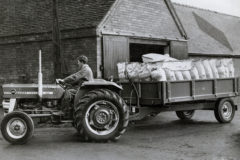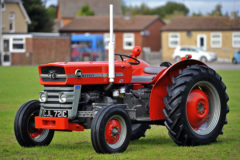1975 Bedford CF School Minibus
Posted by Chris Graham on 11th December 2021
Mike Neale tracks down a remarkably original 1975 Bedford CF School Minibus that’s now in enthusiast hands.
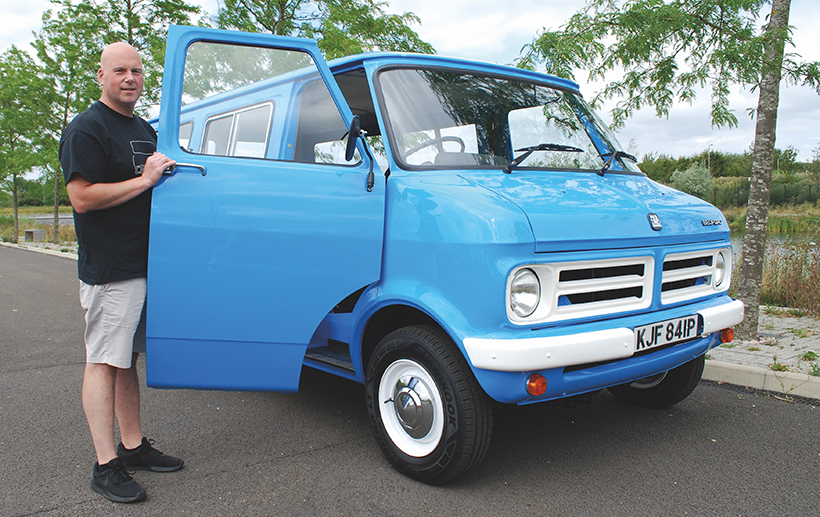
Richard Harlow and his 1975 Bedford CF School Minibus, which he bought six years ago.
Vauxhall Motors Ltd. launched its answer to the market-leading Ford Transit in October 1969, almost exactly four years after the arrival of the Dagenham product. After 17 years of production of the much-loved Bedford CA – which itself had been the clear market-leader when launched but was now totally outclassed by Ford’s offering – the days of the rattly front bumper were finally over. The new kid on the block was now the Bedford CF.
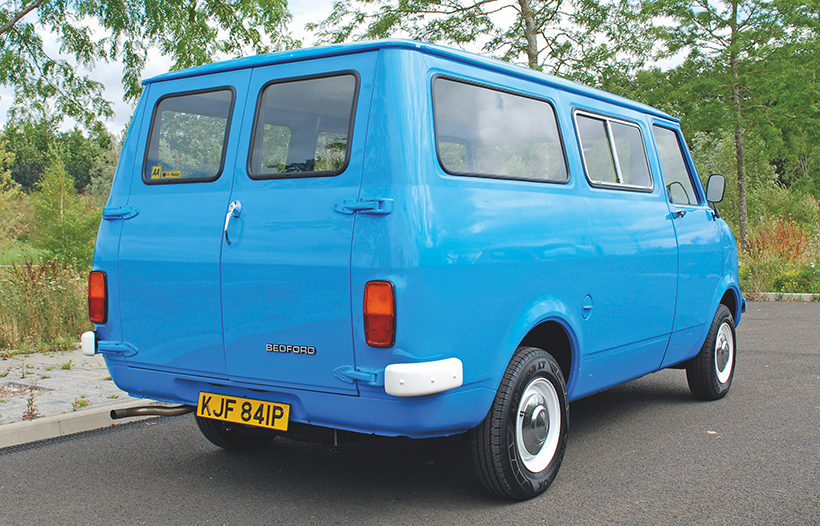
But would the new arrival challenge the domination of the vehicle whose very name came to be used to describe virtually any medium sized van, and still is to this day, over 55 years later? Vauxhall had got hold of some of the first Transits in 1965 to assess the threat of the competition which, they correctly deduced, was very real. The CF was their response and, in some ways, it wasn’t all that dissimilar to the Transit, but perhaps with more American-style overtones, a little like GM’s transatlantic vans. I’m sure we’ve all seen customised Bedford CFs painted in black with a red stripe to look like the A-Team’s GMC Vandura, which they did rather resemble – if you squinted a bit!
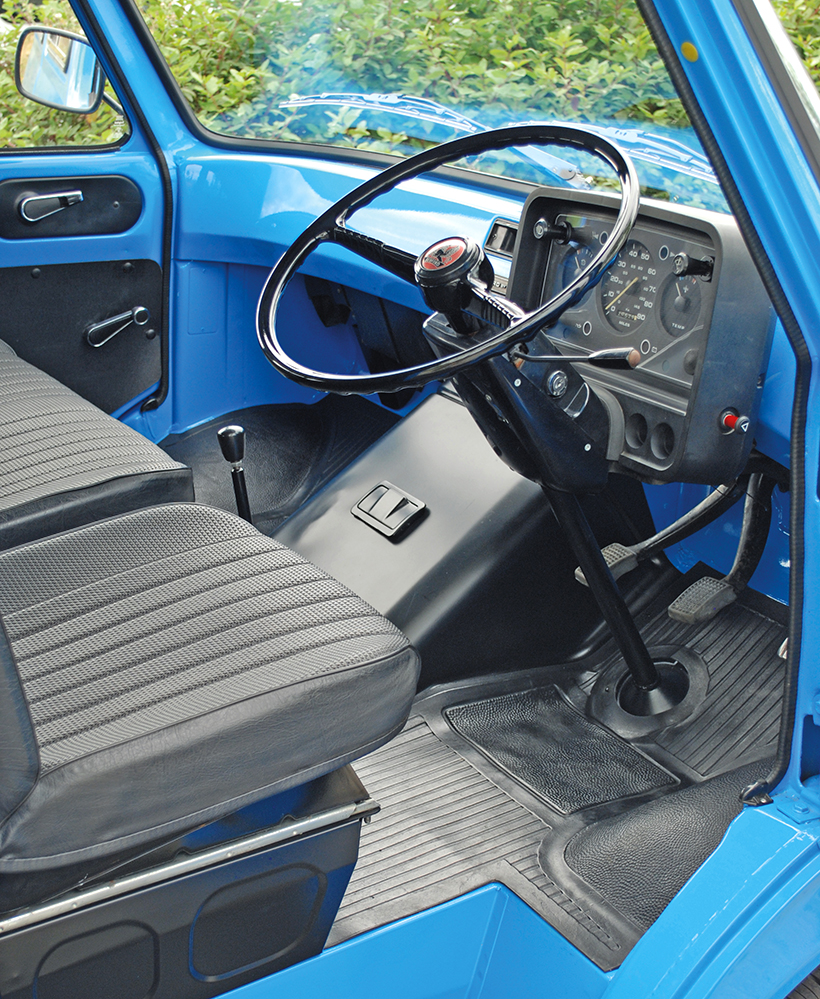
A remarkably original and well-preserved cab area which will, no doubt, evoke many memories.
The Bedford CF had independent front suspension, telescopic hydraulic shock absorbers front and rear plus rack and pinion steering. To maximise its appeal, the CF was offered in many different guises. There were several different wheelbase options: 106in, 126in and later 140in. There was a good range of engines, depending upon the payload. Initially, buyers could choose from the 1,599cc and 1,975cc slant-4 overhead-cam petrol engines from the Vauxhall FD Victor, or the 1,760cc Perkins 4.108 diesel and the 2,523cc Perkins 4.154 diesel. Later, a 1,759cc 4-cylinder petrol and 2,279cc four-cylinder petrol engine were offered, or GM’s Opel-derived 2,064cc OHC diesel. A small number of Bedford Lucas Electric CF vans was also built, from 1982.
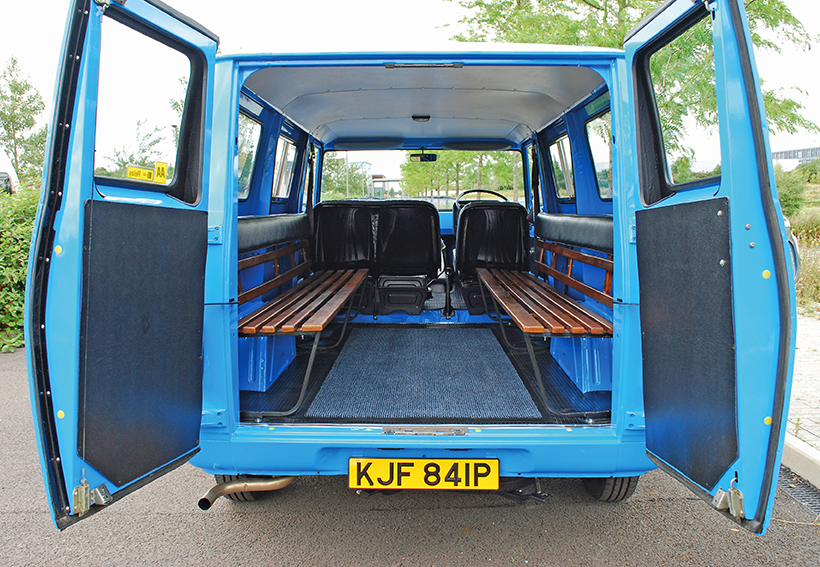
Wooden-slat seats – which bought the CF’s life as a school minibus to an end – have been refurbished with the wood revarnished twice because the owner wasn’t happy with the results from his first attempt.
Initially, you could have either a three-speed (on smaller-engined models) or four-speed gearbox, with later CFs having a four-speed ZF all-synchromesh ‘box with optional overdrive, optional five-speed, or the GM three-speed automatic. There was a choice of carrying capacities; 14cwt, 18cwt, 22cwt, 25cwt and 35cwt – the latter having twin rear wheels. The 14, 18 and 22cwt vans had a body capacity of 238cu.ft. (6.74m3), compared to the 178cu.ft. of the standard SWB Ford Transit. The heavier weight models had high-roof bodies with a capacity of 317cu.ft. (8.98m3).

Body types included panel van, minibus with side windows, chassis-cab, chassis-cowl and pick-up. Cab doors could be hinged or sliding, and side-loading doors could also be specified on slam-door vans. Various specialists offered other conversions, such as ambulances, box vans, Luton vans, ice cream vans, mobile shops, milk floats, horse boxes, refuse trucks, tippers and camper vans. Consequently, there were innumerable different body/chassis permutations.

Bedford pioneered the semi forward-control van layout with the CA, and carried it on with the CF. On both, there are two points of engine access; through the bonnet as seen here, or via a removable panel in the cab.
From 1973, following the demise of its home-grown Blitz vans, Opel sold the CF in Germany and other European countries through its dealer network as the Opel Bedford Blitz. Then, in 1975, new badge designations were given based on the Gross Vehicle Weight rating in metric tonnes. So, the 18cwt became the CF220 (2.2 tonnes), the 22cwt became CF250 (2.5 tonnes), the 25cwt became CF280 and the 35cwt became CF340. A 140in chassis cab was badged ‘CF350’ for specialist bodywork up to 12ft, which had an uprated rear axle.
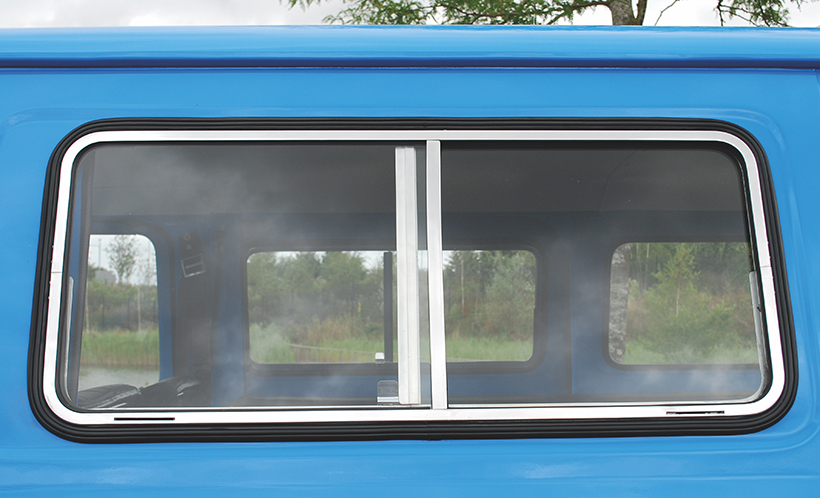
The windows have been re-rubbered, with seals coming from the same company that supplied Bedford, back in the day.
In 1980, the CF was given a facelift with a new, full-width plastic grille, which could be unbolted and removed for easier access to the engine. Bigger, more modern-looking black bumpers were fitted. The old metal door handles were retained, which allows the facelifted CF1 to be distinguished from the 1984-onwards CF2, which had new, chunkier door handles, mechanical upgrades and front disc brakes as standard. 4×4 versions of the CF were also developed in the 1980s, in conjunction with Ferguson Formula Developments in Coventry.

Headlining was a bit tatty, so owner Richard had a new one, to the original pattern, made and fitted.
Bedford’s own sales literature lists some of the well-known operators of CF vans, including British Gas, British Rail, Cadbury Schweppes, Currys, the Daily Express and the Daily Mail. Ultimately, of course, the CF never did knock the Transit off the top spot. It’s not that the CF was a bad van by any means but, somehow, it never quite captured hearts and minds in the way that the old Bedford CA had done, or that the Ford Transit continued to do. Maybe it was just too late to the party, or maybe the Transit was, simply, better. It was, nevertheless, still a pretty good seller for Vauxhall, with almost half a million built by the time it went out of production in 1987.
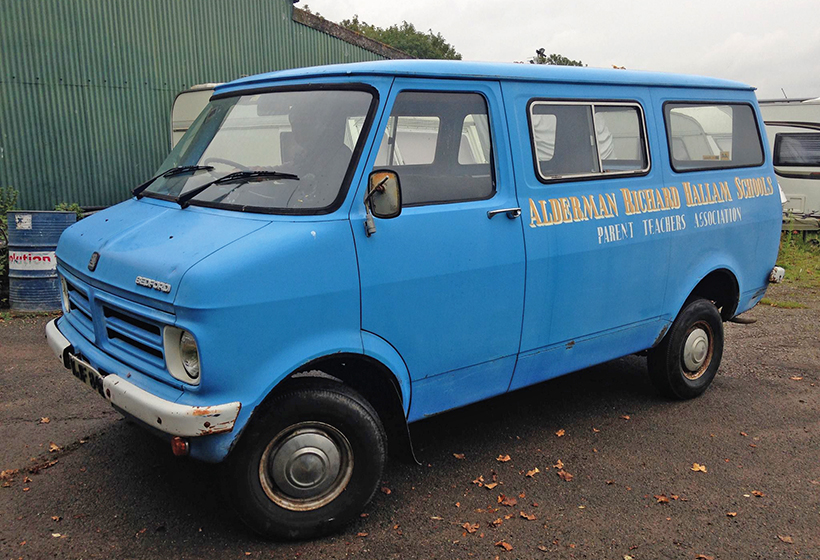
The minibus as purchased – we suspect that buying it new involved much fund-raising effort.
Nowadays the CF has quite a following. This 1975 Bedford CF Minibus was bought six years ago by Bedford enthusiast Richard Harlow. It was supplied new as a school minibus to Alderman Richard Hallam School, in Leicester, which kept it until new national legislation required all minibus seats occupied by children to be forward-facing, thus ruling out the CF’s side-facing wooden-slatted benches. One of the parents bought the CF from the school and kept it for a few years before selling it to Richard who is, therefore, only its third owner.
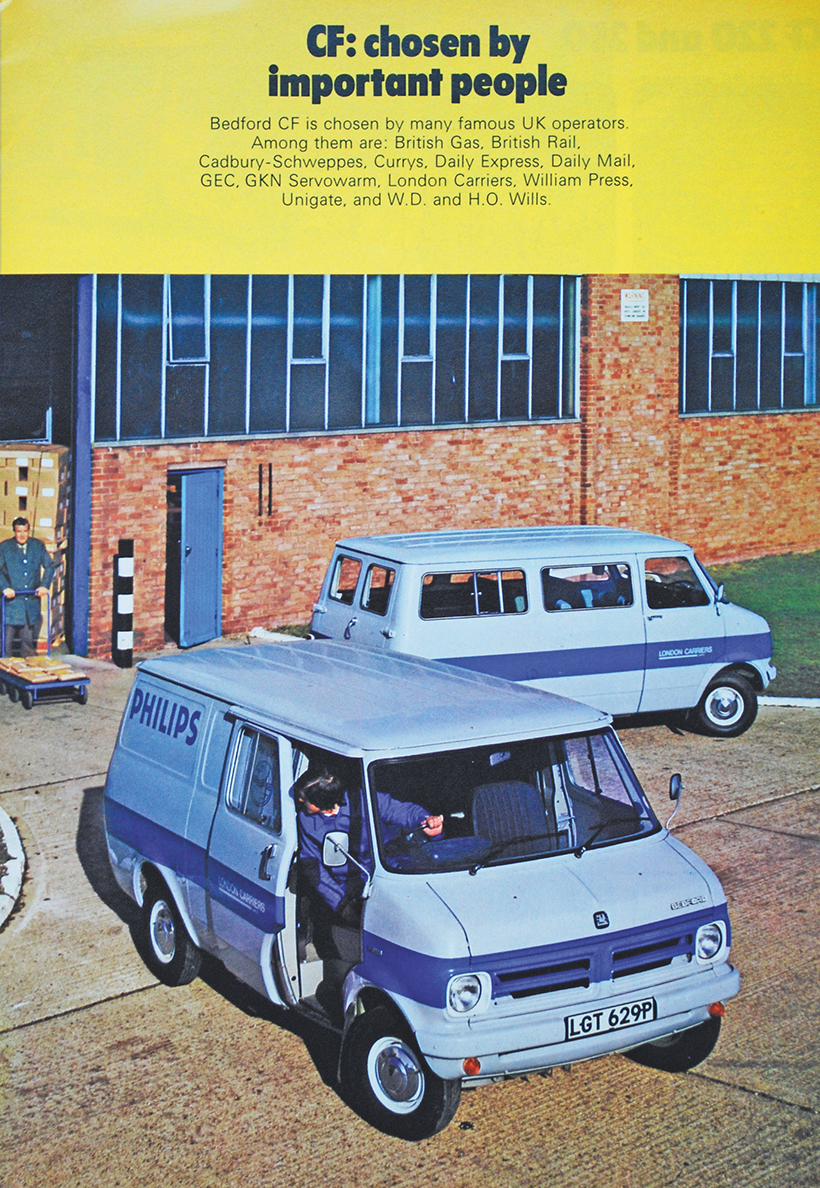
Front cover of the 1976 brochure which, we imagine, various members of the school PTA committee studied closely.
The Bedford still has its original, 1.8-litre engine, which just needed new filters and gaskets. The van has only clocked up just over 20,000 miles from new, 45 years ago; that’s an average of only 445 miles a year! “It feels quite new, quite tight,” notes Richard. “Bodily it was quite sound. It had been Ziebart-coated, which obviously helped preserve it. I had it resprayed by Avery’s Garage & Transport of Leighton Buzzard, which specialises in commercial vehicles – the company resprayed the well-known Bedford Mobile Cinema, for example,” Richard explained.

The seats and rear interior, as acquired by Richard.
The original seats remain in place. “I re-varnished the rear bench seats three times, but still wasn’t happy with the results, so I had them acid-dipped and then tried again, and they look fine now,” recalls Richard. Even the original floor mats were kept – Richard brought them back to life using black boot polish.
The wheels had quite a bit of surface rust so were shot-blasted and then powder-coated in white. The original chrome hubcaps have been reused, but replacement mirrors were fitted onto the original mirror arms, and new badges were added. The CF’s side windows were intact, but the rubbers had perished and the clips had broken. Richard phoned Cheshire Vehicle Windows to ask about getting them refurbished but, before he’d finished describing them, they told him what he had – it turned out that they were the original window suppliers to Bedford!
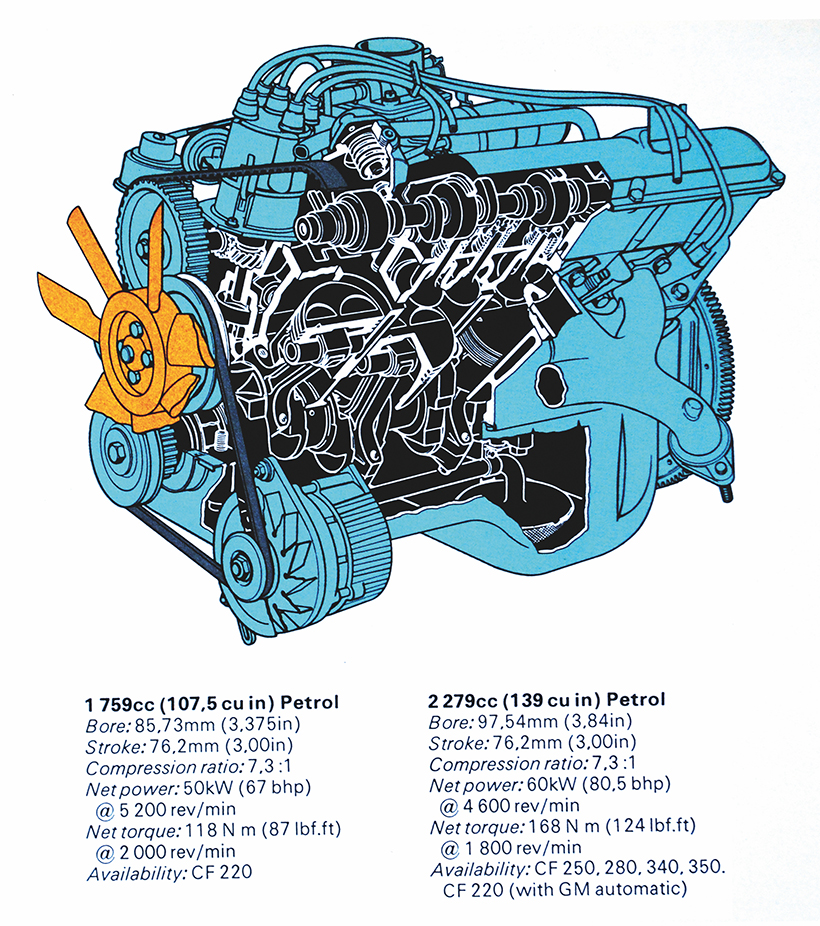
Both 1.8 and 2.3 petrol engines were offered, alongside diesel power courtesy of F Perkins Esq. Both petrol engines had belt-driven camshafts; something that wasn’t welcomed universally by buyers.
Richard delivered the windows and the company provided the new rubber inserts, new sliders and new clips. The original frames were kept and re-polished. The van still has its period AA stickers in the back windows that the school had applied. The original electrics and wiring have been retained. The headlining was replaced but is identical to the original, while the steering wheel has been refurbished.
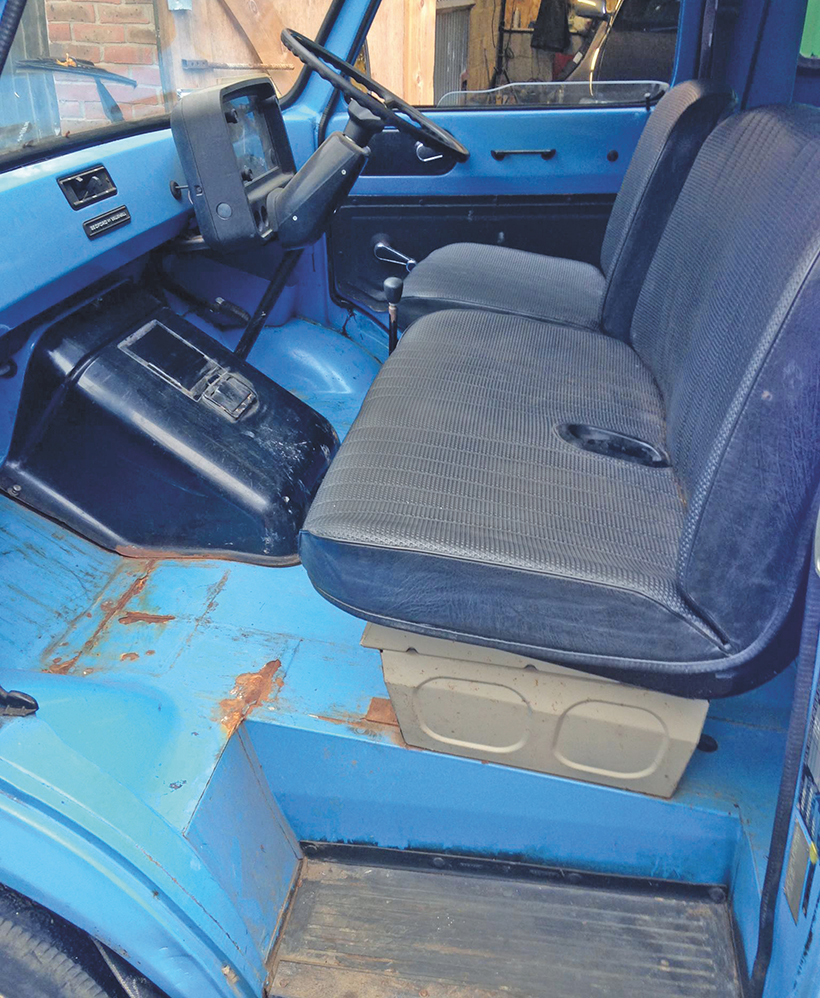
The cab, as supplied, and proof that rust-weakened cab steps are NOT part of the standard CF spec!
“The van is happy at around 55mph, and is pretty manoeuvrable around town. It has drum brakes, which are fine – you don’t go very fast,” explains Richard. “It’s not too bad to get spares for, and I have a contact in Holland who only does CF spares.” Richard grew up with Vauxhalls and Bedfords, as his family always had them. His first car was a Vauxhall Nova and he’s now on the committee of the Bedford Enthusiasts Club, which is good for contacts and organises a number of events.
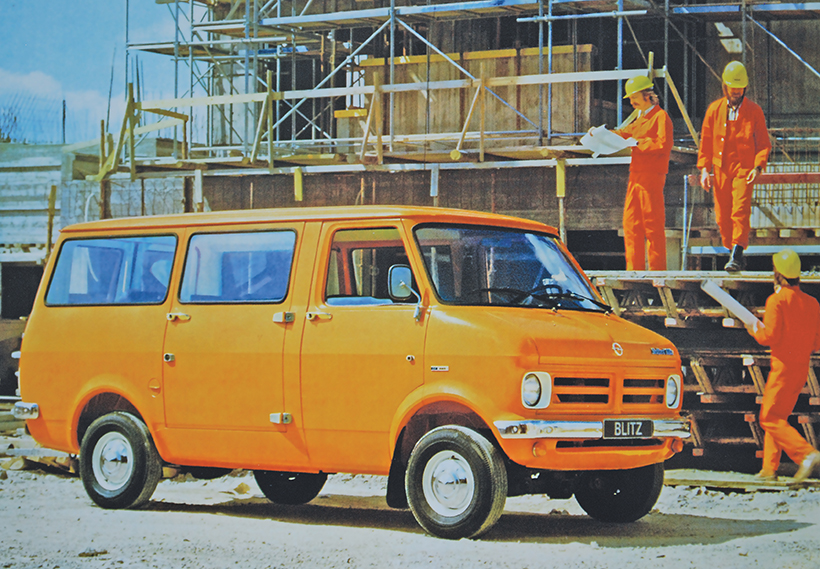
From 1973, following the demise of the continental Opel Blitz, the CF was sold in Germany and other European countries as the Opel Bedford Blitz.
At its first show after restoration, the CF won first prize on the Bedford Club’s stand. Although he has restored a few vehicles in the past, this is only the second van that Richard has done. The first was a red Bedford Chevanne, which he’s since sold. He also owns a Bedford CF Autosleeper camper and a Bedford S Type lorry. “I’ll be keeping this one as a minibus to original specification, not converting it to a camper,” Richard reassures me. “I may even do some wedding or film work with it.”
So it looks as though the future of this Bedford CF is assured, which is great news. Thanks to Richard Harlow for his assistance with this article, and for providing the as-found photographs.
For a money-saving subscription to Classic & Vintage Commercials magazine, simply click here



